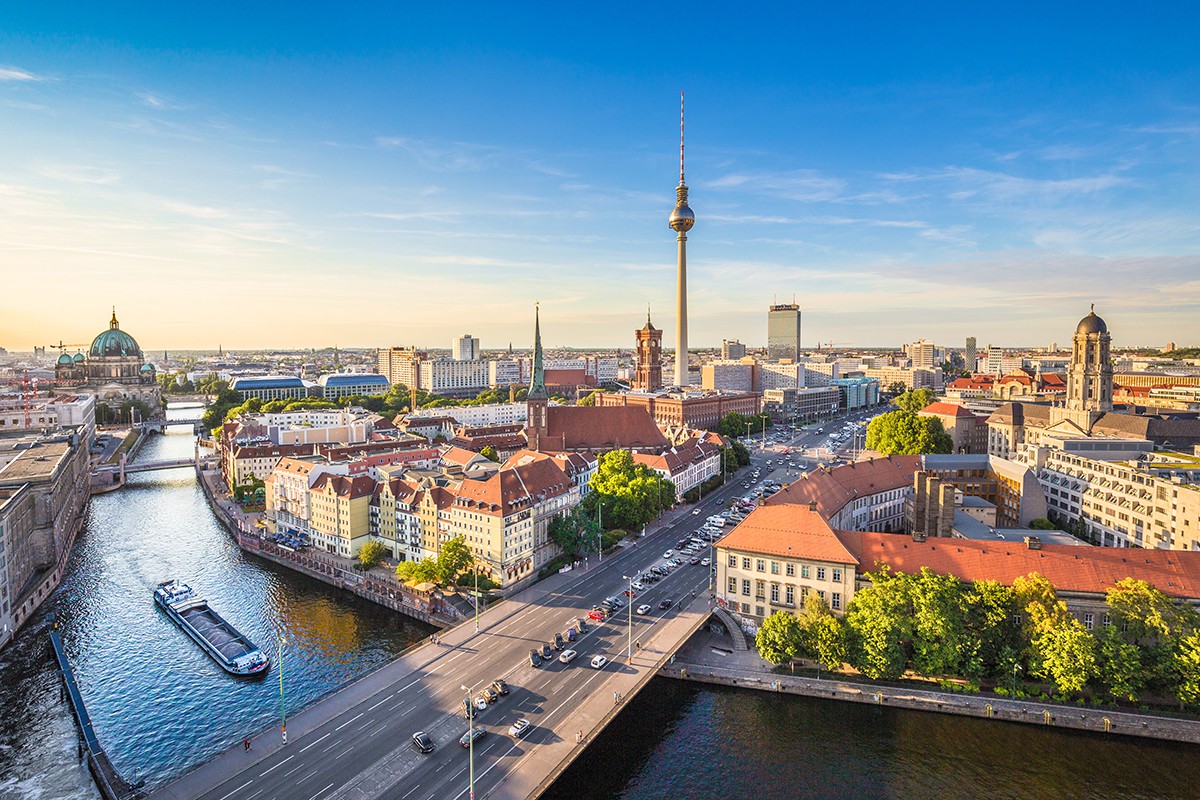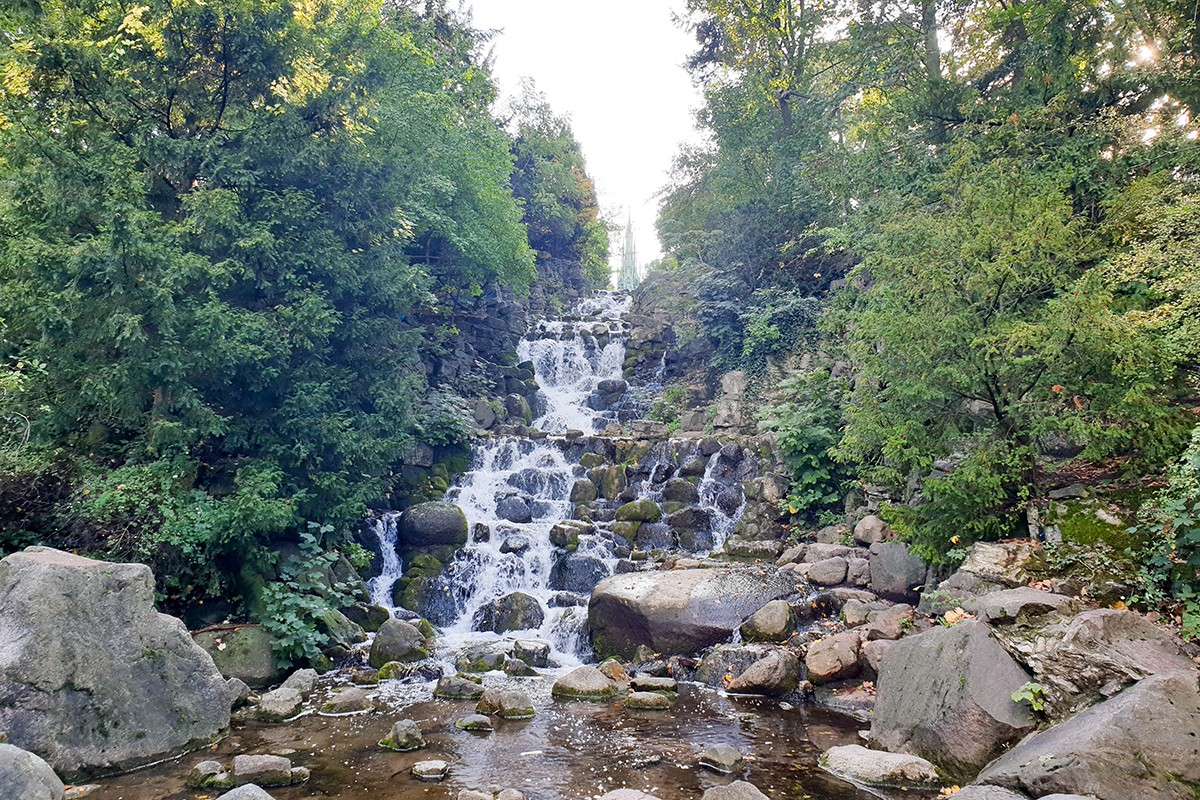Oh Berlin. I visited for the first time in my (adult) life in 2019, and I became absolutely besotted with the place. So much so that I extended my stay twice, and can’t wait to return.
There’s just something about Berlin, that makes it must-do on anyone’s Europe travel itinerary. It has an extremely sombre history, but the way it has picked itself up and become such a hip, arty, complex city is something that draws travellers in time and time again.
Come to Berlin to learn – of course. But also come to hang out at the many hip cafes, drink too many steins, take a look at the street art and just soak in this amazing city that’s really a place of its own. It’s also famous for its all night parties – I’ve never gone to one, but if that’s your thing, Berlin’s the place.
Most people visit Berlin for just a few days – especially if you’re visiting on a wider Europe itinerary or are weekend tripping from elsewhere in Europe. It’s worth sticking around for longer if you can – I did – but if not, this 3 days in Berlin itinerary should answer most of your needs for your time in Berlin.
I’ve included a mix of activities in this Berlin 3 day itinerary, from some of the absolute best things to do in Berlin to some lesser known places.
So, let’s take a look!
About Berlin
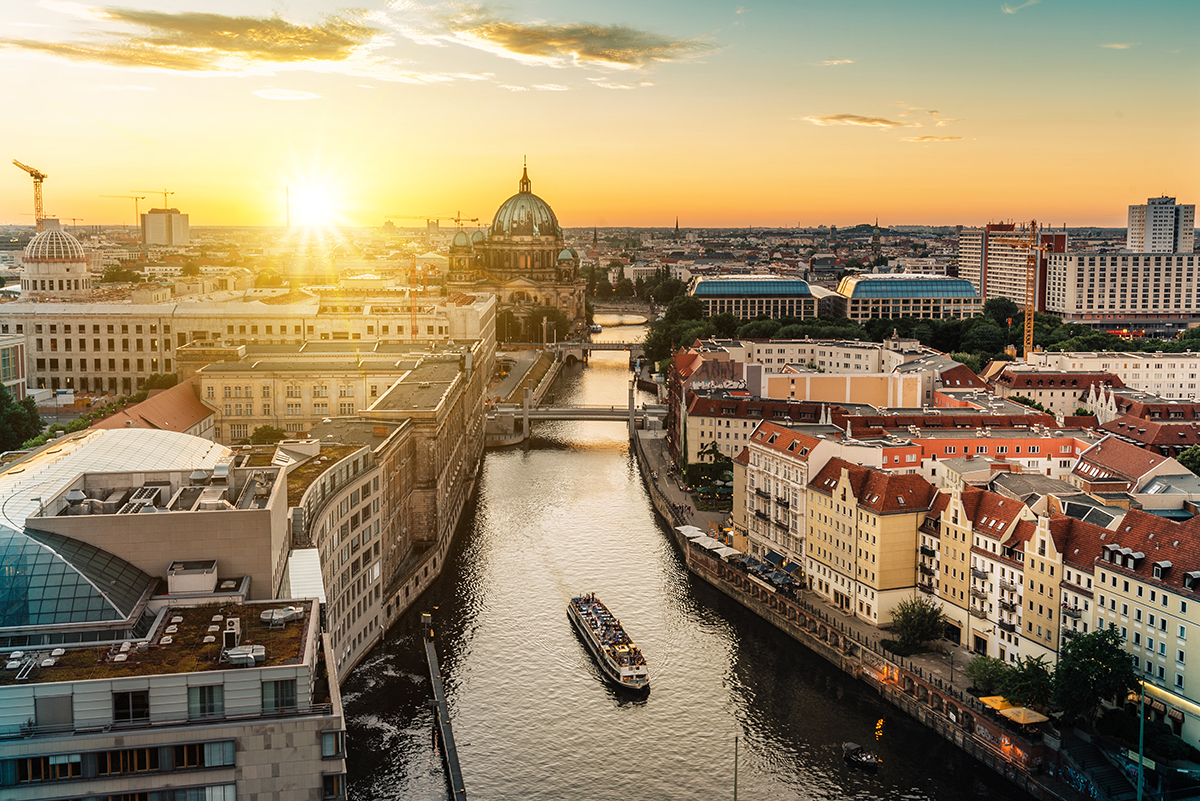
There are hardly any cities that are quite as fascinatingly historic as Berlin. That being said, it’s history doesn’t go back as far as lots of other major cities – it was first recorded in 1244, due to its position on the Spree River. The Germanic tribes fought the Slavs here, conquered by Albert the Bear which gave Berlin its symbol of a black bear standing on its hind legs.
In 1417, it was made capital of the Margraviate of Brandenburg (Germany was at that point split into many nations at this point) and then the capital of Brandenburg-Prussia, and finally, the capital of the Kingdom of Prussia.
This Kingdom swept across Central Europe, encompassing many nations, from modern day Belgium in the west to Lithuania in the east, and Denmark in the north to Switzerland in the south – with Berlin at its heart.
Prussia survived until 1918, after Germany’s defeat in WW2, when the monarchy was overthrown and the country, with a lot of loss of territory, became a republic. Berlin remained the capital of the unstable Weimar Republic, which was weakened by its loss in WW2.
However, during the 1920s, Berlin enjoyed a period of prosperity, and was known as one of the world’s great cultural and industrial centres, and was at the time the largest city in Europe.
Despite this, the crash in 1929 hit Berlin hard. This is when the Nazi party really started to take off. They grew off the back of the Weimar Republic’s failure with false promises, but quickly into their rule they started persecuting Jews and other minority groups. After Kristallnacht in 1938, they began transferring the Jews to death camps elsewhere in Germany and Auschwitz in Poland.
Berlin was heavily bombed in the war, and when the Nazi party were defeated, foreign powers moved in to take control of the city. Germany was to be split into four (between the USSR, UK, USA and France) – but because Berlin, its capital, was deep in the heart of the Soviet part, the city was also split into four. France, the UK, and the USA cooperated with each other – the USSR did not, and the Berlin Wall was put up in 1961 to ensure that their side of the city stayed separate. So one of the most interesting facts about Germany, and Berlin in particular is that it was divided for 28 years.
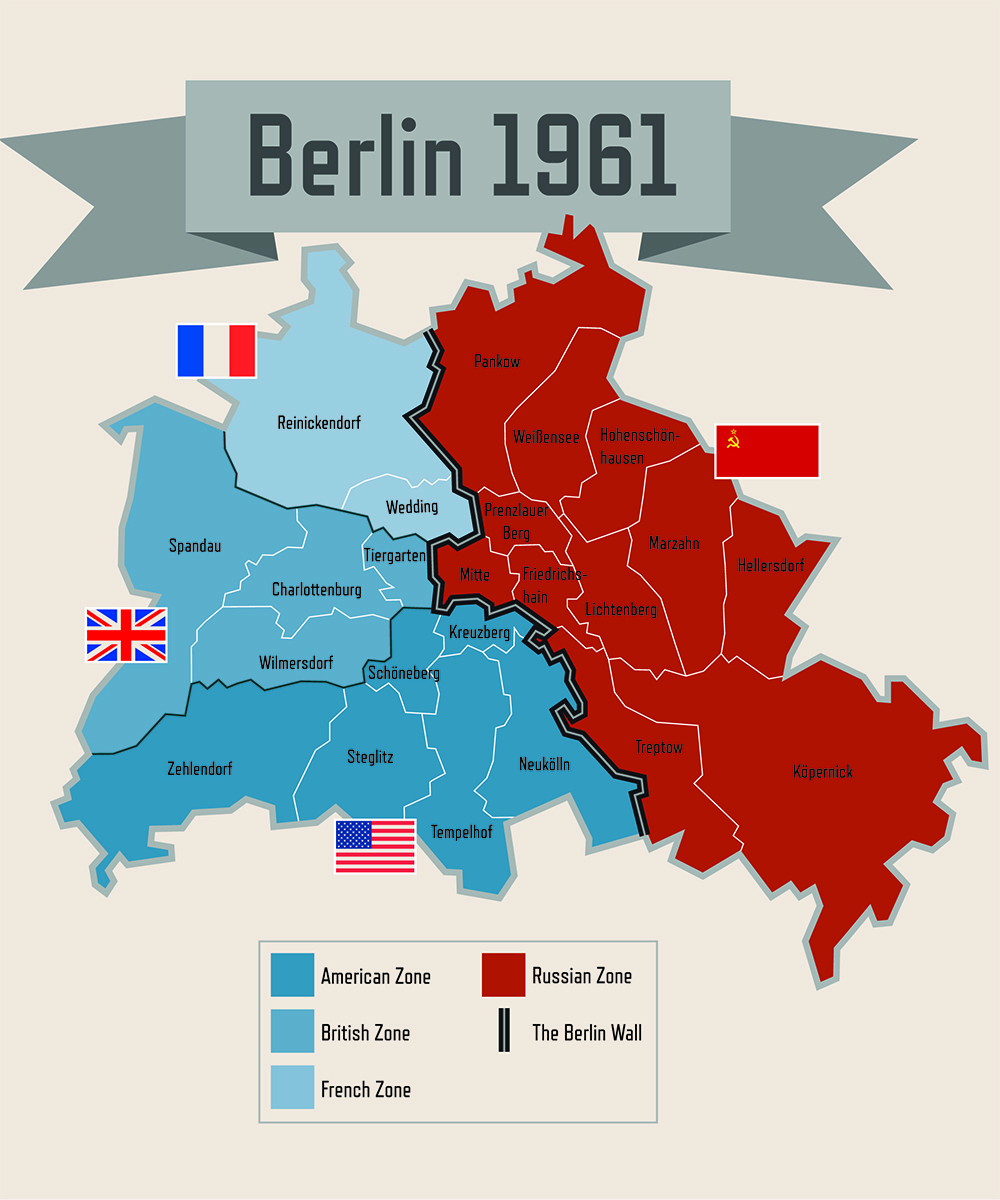
East Berliners therefore, lived a completely different life to West Berliners for 30 years. Like most places in the USSR and Eastern Bloc, they were cut off from the outside world. Their food was rationed, their houses were unheated, they had little freedom of speech and their entertainment was limited to USSR approved material.
Berlin was divided so quickly that many families were separated, and while West Berliners could apply for a visa to visit East Berlin, it was nearly impossible for East Berliners to visit the west. Around 5000 people escaped; 136 people were killed while crossing (according to official records) and roughly 200 were injured.
The Berlin Wall was pulled down in 1989, which marked the end of the USSR. Berlin and Germany were officially reunited in 1990, and Berlin has since been the capital of a modern Germany.
Still very aware of its past but extremely forward-thinking, Berlin is now a prosperous European city, with a thriving arts and cultural scene, as well as hundreds of industries and employment opportunities. And, of course, it’s a fascinating place to visit!
When to visit Berlin
Berlin’s a good idea any time of year. I spent a while there in October 2019, and it was chilly – but it didn’t stop me exploring all over the city.
Berlin gets fairly warm in the summer, although it can be a bit erratic, and can be chilly in the winter. But nearly all of the attractions in Berlin are all-weather, so you can see the best of the city in any season! Just make sure you add a scarf and gloves your Berlin packing list in the winter – and don’t forget your rain jacket year-round!
How to get to Berlin
Berlin is well connected to pretty much the whole world. There are two airports with flights to every continent, trains frequent neighbouring countries, and buses connect Berlin with basically all of Europe. I’d recommend overlanding if you can – it’s more eco-friendly – but if you’re flying within Europe, EasyJet has plenty of flights. The national carrier for Germany is Lufthansa.
You can browse and book transport to Berlin here.
How to get around Berlin
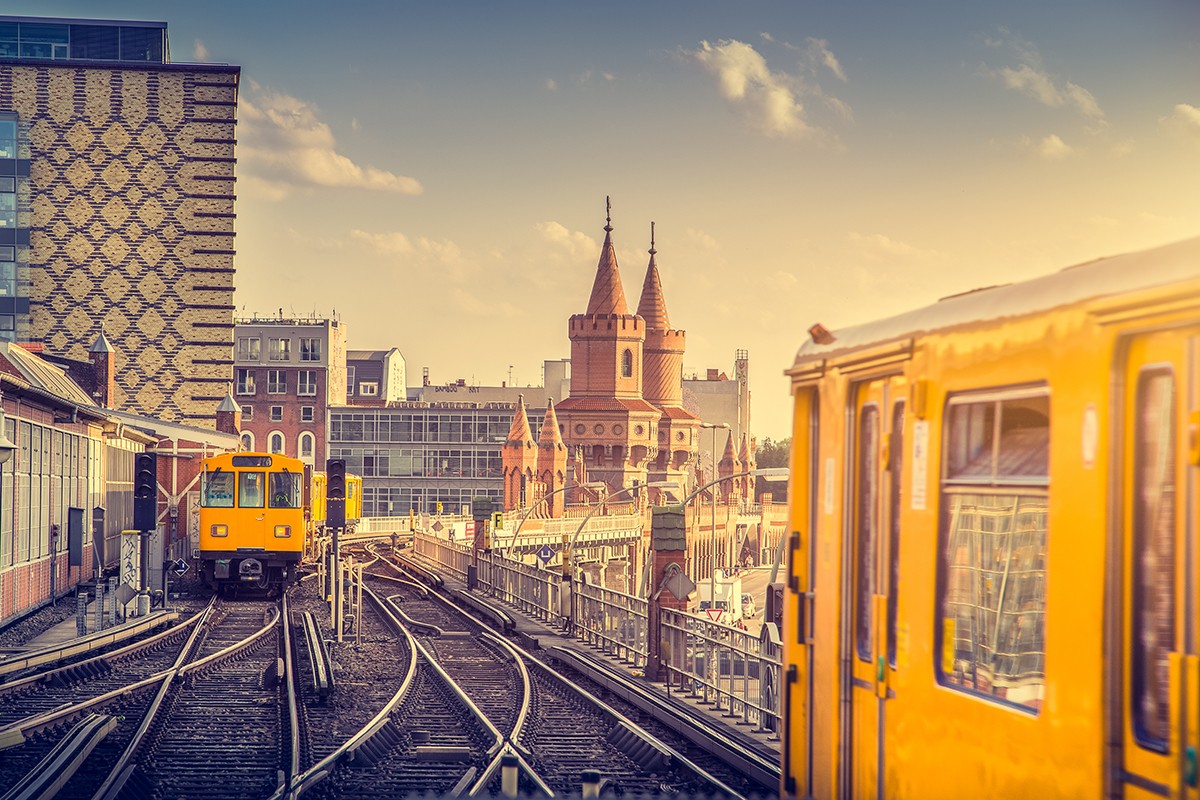
Berlin is really well connected with the S Bahn (overground train, that moves on levitated platforms above the streets) and the U Bahn (underground trains).
Wifi in Berlin
WiFi in Berlin is decent; at all the hostels and hotels I’ve tried it’s been good, and I’ve also managed to login and get some work done in cafes. You shouldn’t have a problem being connected here, but you could also purchase a local German SIM.
Card Payments in Berlin
Something about Berlin that’s really worth mentioning is that card payments are not really the done thing here. Weird, I know. Germany is such a modern country in many regards, but so many restaurants and bars only accepted cash – I’ve heard some reports that it’s still the same even now in COVID times.
Of course, you can always try to pay by card – it certainly isn’t a cash only society – but do have some cash with you just in case you discover that your 50 euro dinner cannot be covered by card.
When you are taking cash out, take it from banks and other official looking ATMs. The small little ATM boxes are not your friend. They will charge a huge fee and the exchange rate will be pitifully low. Avoid at all costs.
Where to stay in Berlin
As you’d expect from such a huge city, there are plenty of places to stay in Berlin of all budgets. Here are some of the best hostels and hotels in the city:
Circus Hostel is where the David Hasselhoff Museum is located (which I mention later on in this post!). On site are modern rooms, both dorms and privates, and the famous Circus Bar. There are bar nights and excursion days available. Click here for rates and to reserve your spot.
Eastern Comfort Hotel Boat is a guesthouse that is, as you might have guessed – on a boat! Located right by the east side gallery, it’s a great budget place to stay if you want hostel prices but somewhere a bit quieter. There are some dorms, and also private rooms with shared bathrooms. Click here for more information.
The Niu Hide is located in East Berlin and is funky mid-range place to stay. It has modern rooms with super comfortable beds and quirky decor, and a large reception area and bar with lounge areas and a trabant in the middle of the room! Click here for more information.
Orania Berlin is a historic, luxury hotel with great reviews. Located near the neighbourhood of Kreuzberg, all rooms are well appointed with a flat screen TV, luxury bathrooms and robes and slippers. There is also a 24 hour fitness centre on site. Click here for more information about the hotel and to book.
Berlin Itinerary Day 1
You won’t get the full picture of Berlin without the advice of a local – or at least someone who has been living there for a really long time. A walking tour can help you out with this! There are plenty available that take in the complex nature of the city.
There are all sorts of tours available, from free walking tours to more niche tours involving a specific part of Berlin’s history and culture. I’d recommend doing a general tour first, and then doing another if you have time – I loved SANDEMANS Red Berlin tour which discussed the Cold War era in this crucial city.
After your walking tour, head to Brandenburg Gate. This is central to Berlin and is a quick icon to snap a photo of. The Tiergarten is right by here and is a great place for a picnic, or you could check out one of the many restaurants in this area.
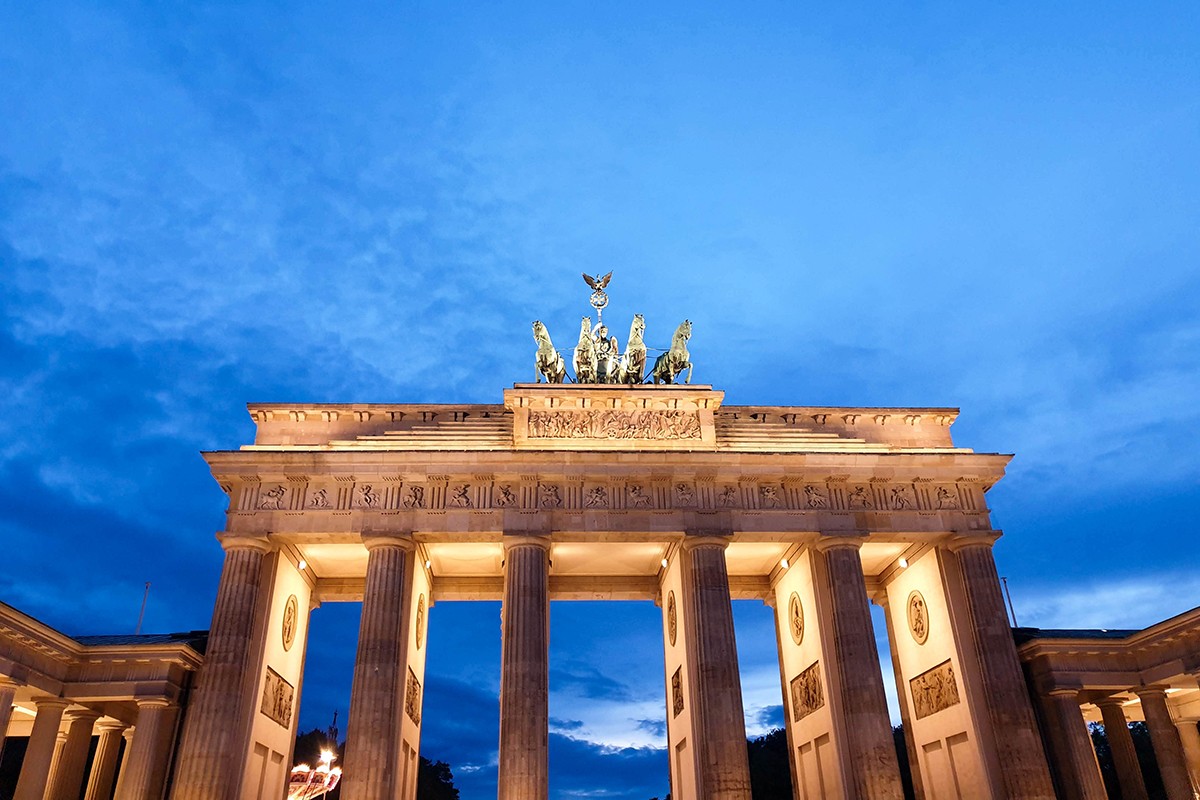
After that, it’s time to get some sobering knowledge of the horrors that have befallen this city. It’s up to you which order you visit these museums in; I have listed them in the order of how close they are to Brandenburg Gate, but you might want to get more of a grounding in the Topography of Terror before learning about the Holocaust.
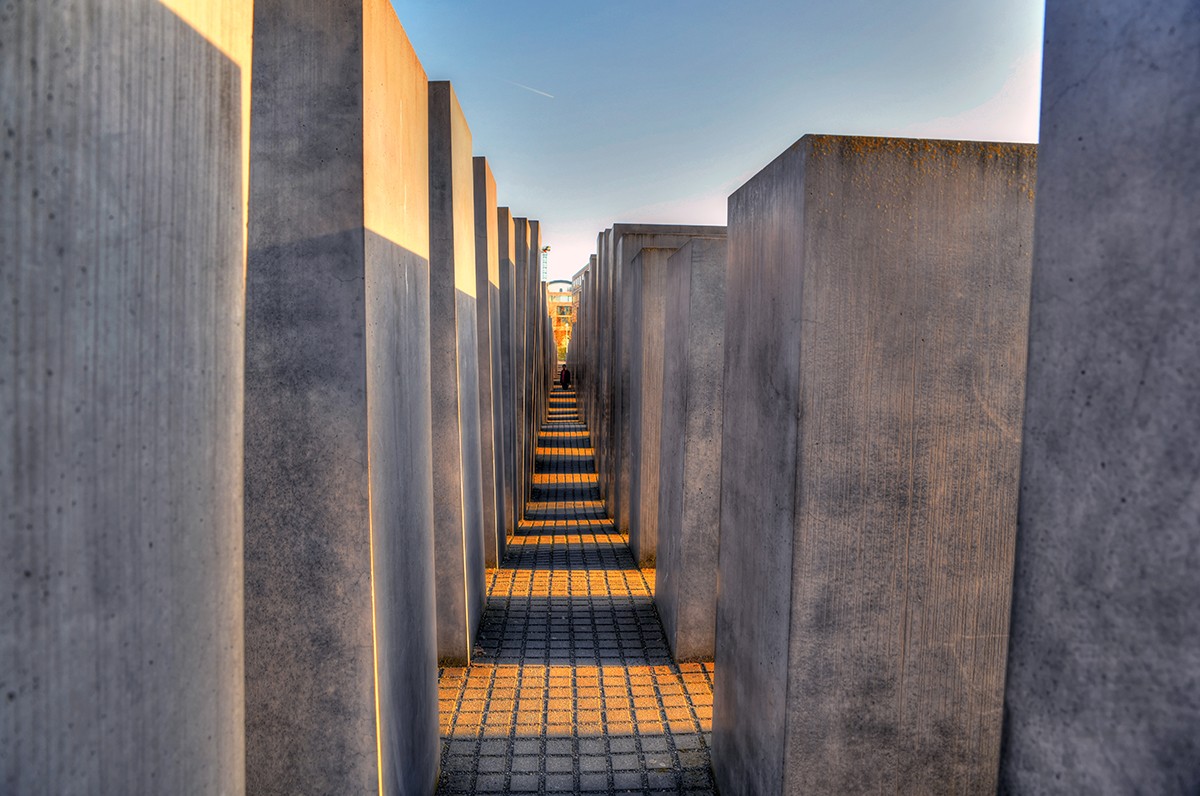
The Memorial to the Murdered Jews of Europe is a sombre yet powerful monument dedicated to those that lost their lives, not just in Berlin, but all over Europe, due to the Nazi regime. The memorial is supposed to represent the people who were taken, and while walking through the many silver blocks, you do get a sense of the enormity of the tragedy.
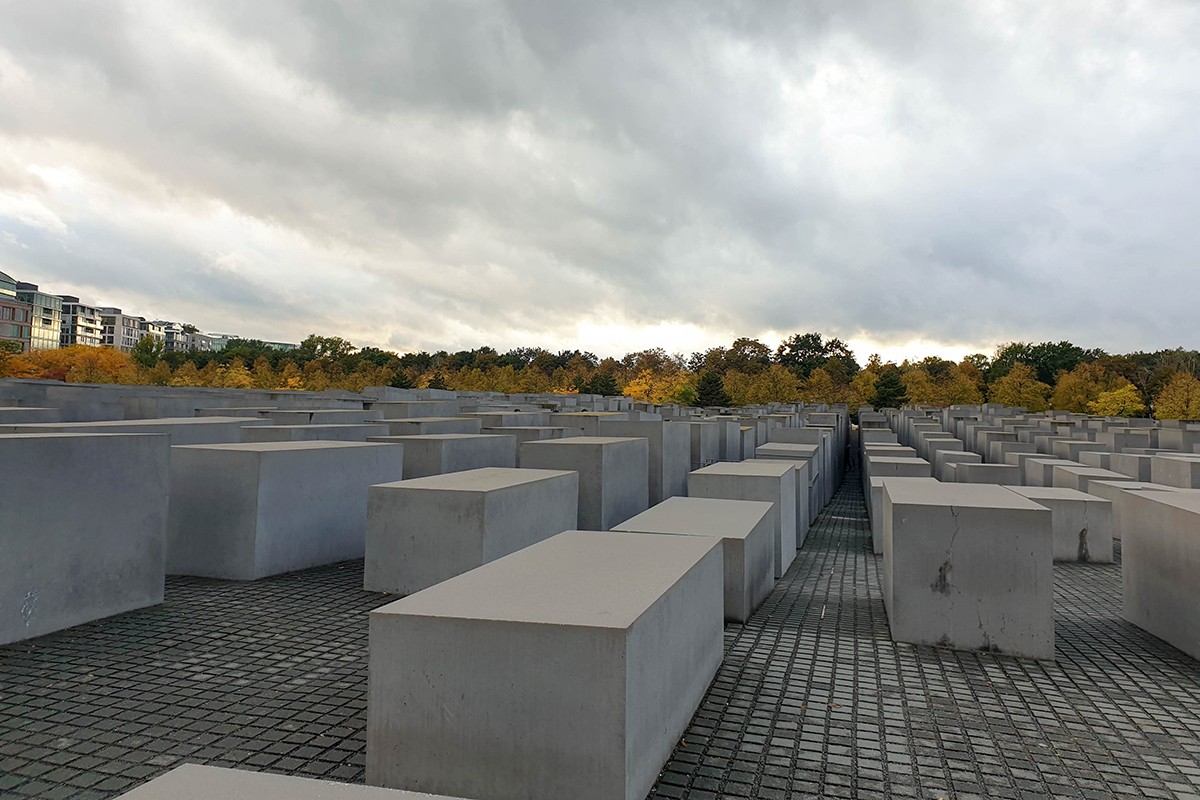
You can just turn up and visit the memorial, but the underground museum (which is well worth going to) often has a small queue. It is free, however, and you can easily spend an hour looking at the exhibits. It is extremely emotive, but it’s well worth visiting.
Pre-1933, 32% of Germany’s Jewish population lived in Berlin, but many left during the 30s as Jewish life got increasingly restrictive and turbulent due to brutal Nazi rule. Jews were forced into Ghettos, which they were deported from between 1941-1943. Tragically, more than 60,000 people were deported from Berlin to various concentration camps, killing centres and other Ghettos. Here’s some more about Berlin in the Holocaust.

Walking away from the memorial towards the Topography of Terror museum, you’ll come past Checkpoint Charlie. This is potentially the most touristy place in the entirety of Berlin, and if you want a photo at the checkpoint, you’re likely to have to queue for a while. Still, it’s cool to check out, and you can take a look at the exhibition about the Berlin wall over the road.

The Topography of Terror Museum explores the complete horror of the Third Reich, and exactly how it grew to the Nazi regime that changed the face of Europe. It’s an intense museum, but it is well worth visiting.
Just over the road from the Topography of Terror Museum is a currywurst stand that serves up meat and veggie currywurst for about 4 euro – it’s worth calling in if you want a post-museum snack!
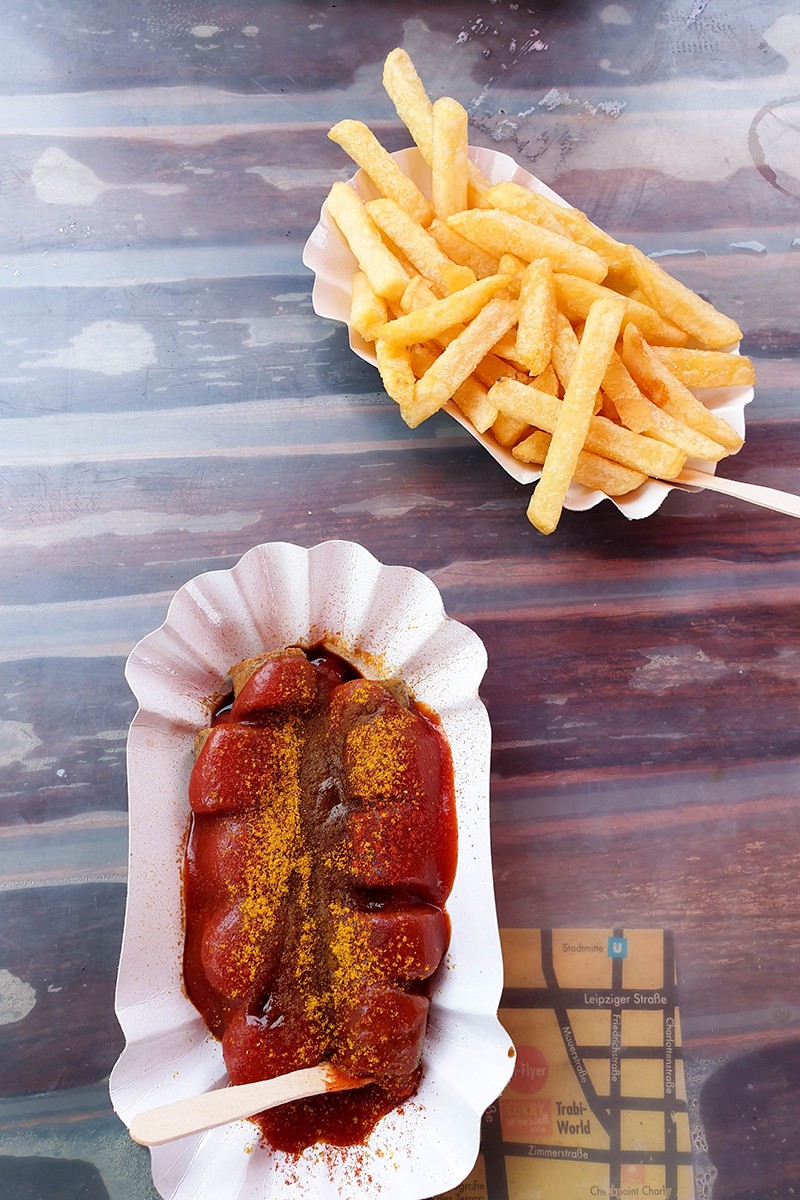
In post-war Berlin, Herta Heuwer came across a British soldier and traded some unknown items for ketchup and curry powder. People were resourceful in post-war Berlin, and Heuwer mixed the ingredients that she had with German wurst (sausage) and currywurst was born. She sold these at her Charlottenburg market stall. They were a hit – sometimes 10,000 or more were sold week – and the stall was in buisness until 1974. Now, you can still buy currywurst (with vegetarian varieties) all over Berlin and the rest of Germany.
Or if you want to save some room for dinner, there are plenty of options. The Tajikistan Tearoom is worth checking out – it doesn’t just have tea, but lots of Central Asian staples, beer, and other drinks.
If you’ve had a few drinks – or even if you haven’t – and want to check out one of the most unique things to do in Berlin in the evening, try visiting the David Hasslehof Museum. It’s set in the basement of Circus Hostel, and it’s more like a shrine than a museum, but it’s a free attraction worth checking out due to its novelty.

When we were there we met a couple who told us that Hasslehof was performing a German Reunification concert the next day, and we subsequently bought tickets – so that could always happen, too!
David Hasselhoff and Berlin – what’s the link?
Around a month after the Berlin Wall was pulled down, David Hasselhoff, who has German heritage, performed a gig on some of the remnants of the wall.
People from East and West Berlin came to listen to the concert, and one song in particular – Looking for Freedom – became the anthem of change in East Berlin. David Hasslehoff has felt disgruntled, at times, that his role in German reunification has been overlooked!
There’s a bar at Circus Hostel, so you can sink a couple of steins there after the museum. Alternatively, buy a beer at a corner shop – many have seats outside where you can enjoy your drink!
Berlin Itinerary Day 2

The Reichstag is the modern German parliament building. You do need to book this tour in advance, but it will tour you around the building and describe the workings of German Parliament. It’s free to enter, but make sure you book it in advance – tickets sell out very quickly!
If the free tours are all sold out, you can purchase a ticket for a private tour here.
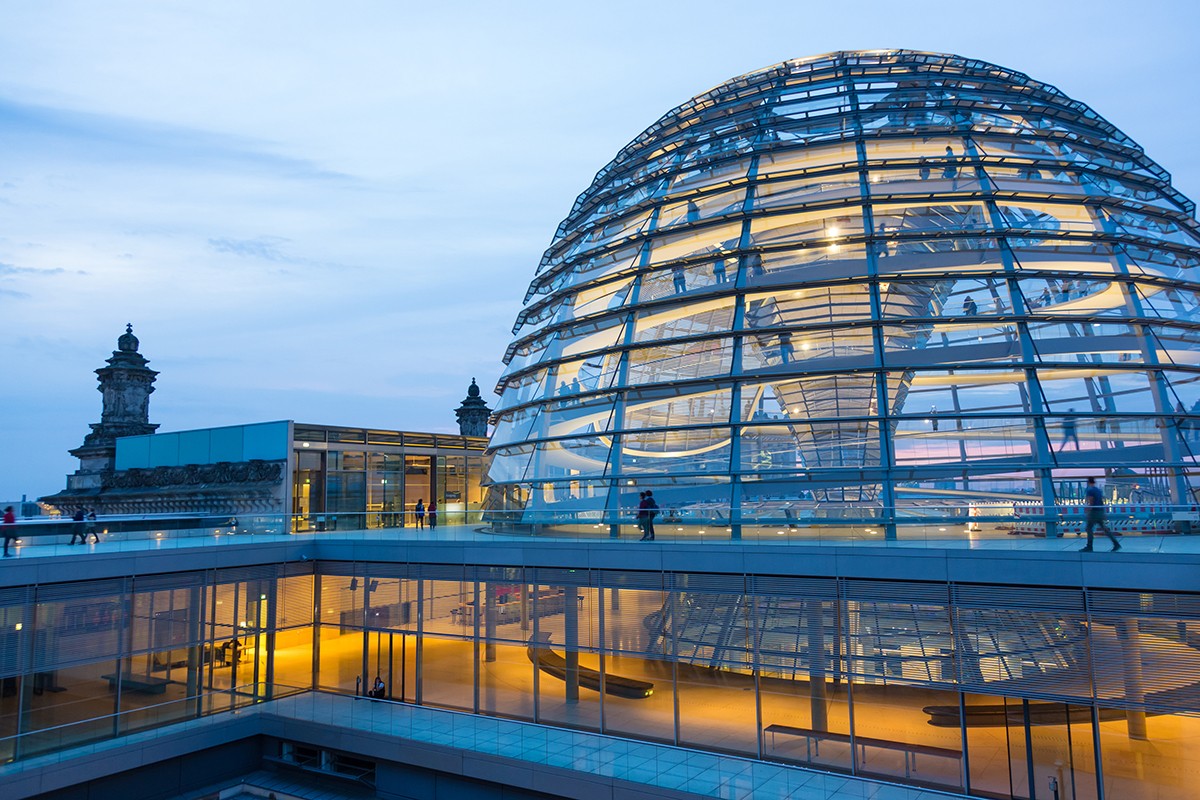
To enjoy yet another aspect of Berlin’s history, check out Charlottenburg Palace. A Prussian residence, this Baroque palace was completed in 1699 and showcases some of the most beautiful architecture of historic Berlin.
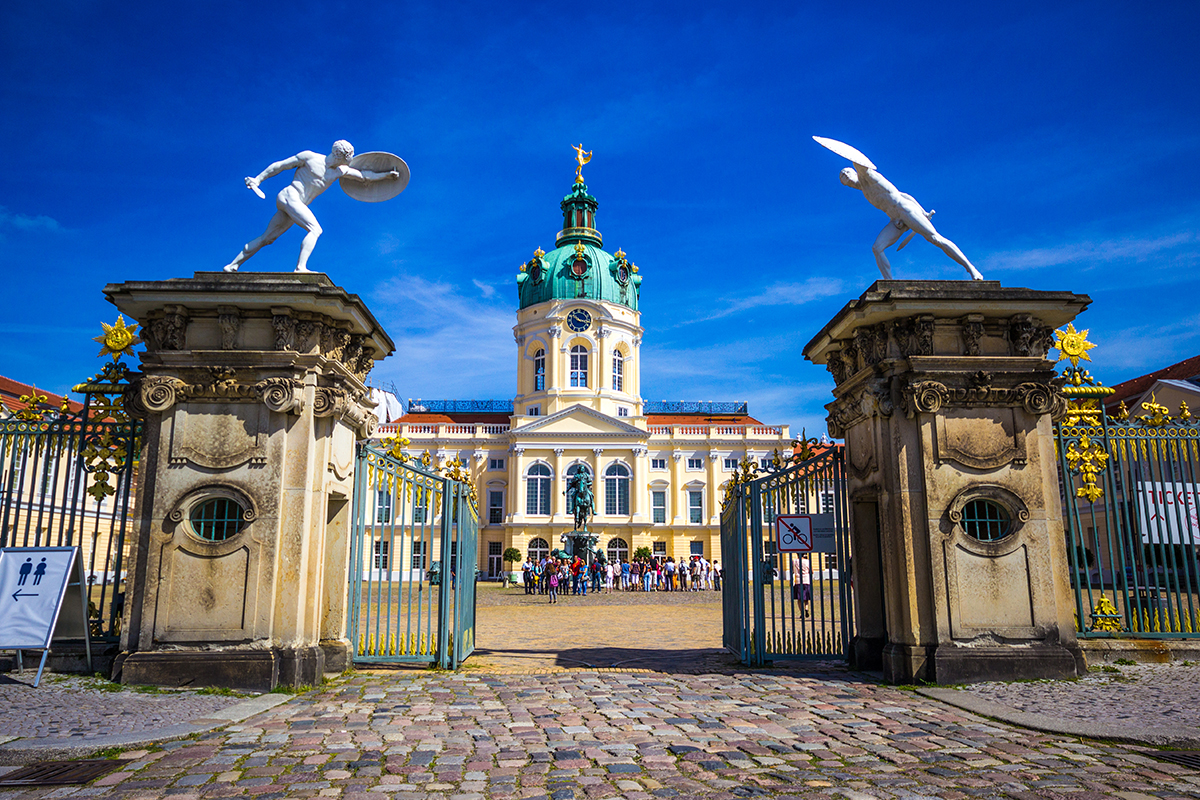
Then, it’s time for a trip over to Museum Island. Berlin is home to over 200 museums, but five of its favourite are here on Museum Island. The Pergamon Museum is Berlin’s most popular and is home to exhibitions of Ancient Greek Art, Islamic Art, and plenty of other historical and classical works. The Bode Museum, the Neues Museum, the Alte Nationalgalerie, and the Altes Museum are the others.

Also, check out the Berliner Dom while you are here. This area of Germany is certainly not as religious as most other parts of Europe, but this beautiful cathedral is worth checking out. Built in 1905, this Neo-Renaissance building is a lovely place to stop to see another side of the city. It costs 7 euros to go all the way to the top!
While it’s nice to look around this area, I would also recommend visiting the nearby DDR Museum. This immersive museum demonstrates life in East Germany (and East Berlin, whereas West Berlin was completely different) and describes all aspects of it.
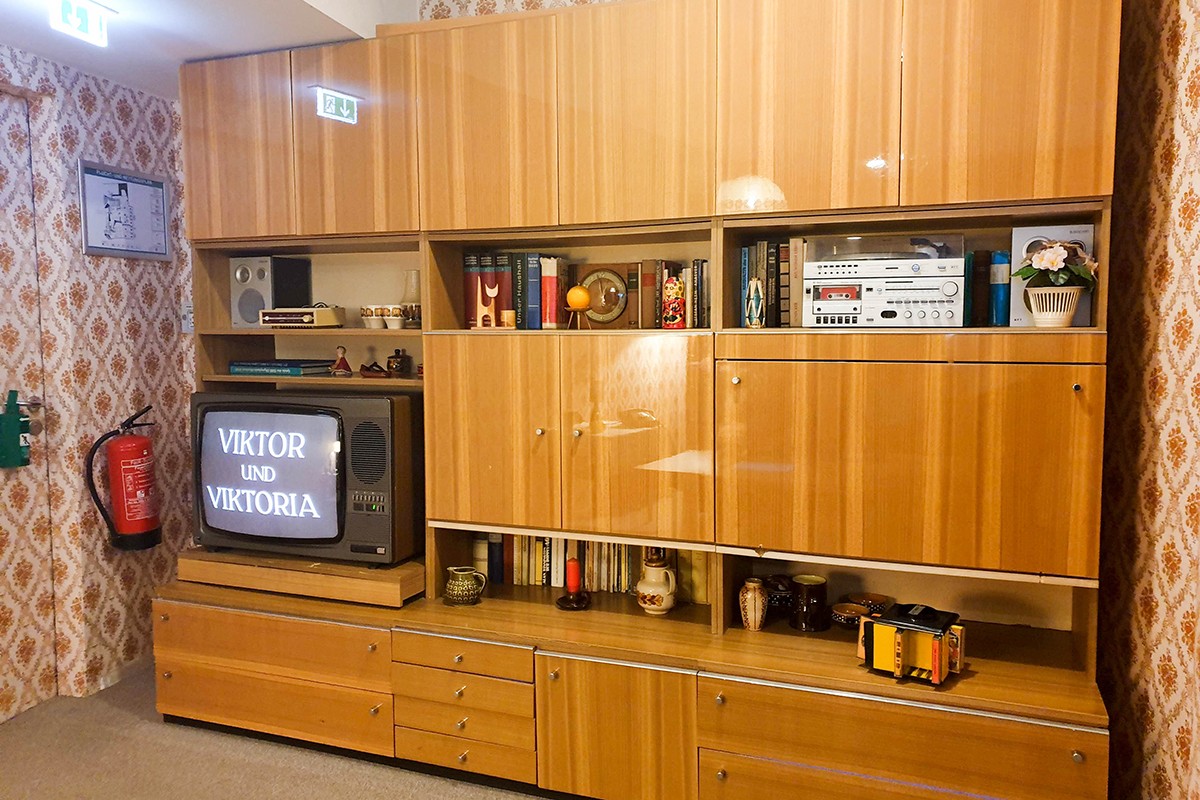
In the evening, take a trip up the Berlin TV Tower. Located in Alexanderplatz, this is the tallest structure in Berlin, and has one of the best views in the city!
You can purchase skip the line tickets here.
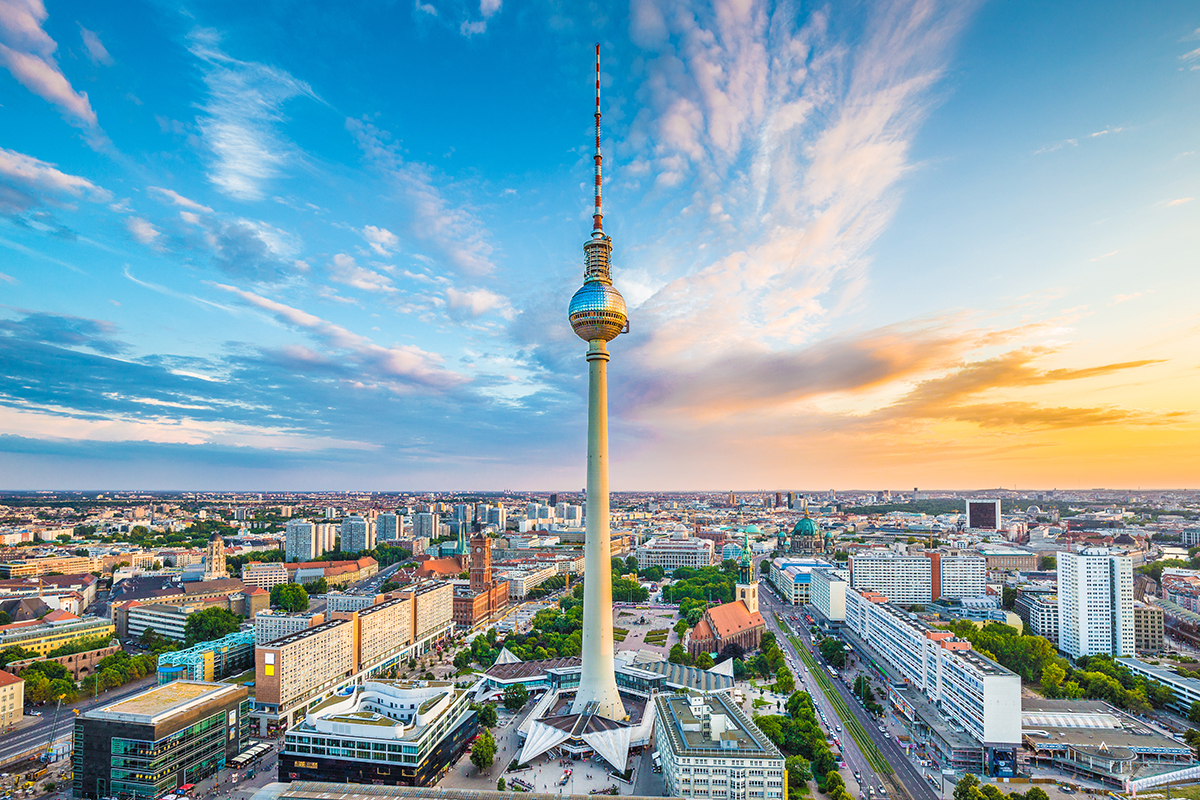
If you don’t want to eat at Alexanderplatz – it is a little pricey – why not try a kebab – or falafel if you’re vegetarian like me?
The doner kebab is said to have been created by Kadir Nurman, a Turkish immigrant in the city, in the 1970s. He had the idea of putting strips of meat into a pitta because commuters and other people in the city seemed like they needed an on the go snack! Some people in the Middle East have debated this claim, saying it has been eaten in the area long before it was claimed by Berlin. However, there’s no doubt about the fact that kebabs are intrinsically tied to Berlin – and the falafel is just as good!
Berlin Itinerary Day 3
Are abandoned airports your thing? If so, check out Tempelhof Airport. This large airport was built during Nazi times and served as the main airport of the city. It is now open for tourists to explore. The grounds are a great place for a morning walk, cycle, and just to enjoy how nature has taken over this abandoned area. You can also do tours of the building itself and specific times!

After the airport, head over to funky Kreuzberg. Here, there are plenty of coffee shops to grab a brew, and also Viktoriapark, which is home to an artificial waterfall and has one of the best views of the city.
If you want to explore more of this area and are a fan of the two-wheeled transport, click here to read more about a bike tour around Kreuzberg.
Then, it’s time to head east! Check out East Side Gallery for some fascinating street art. This is part of the Berlin Wall that was left standing and has been adorned in graffiti from different artists, often with a liberal slant, and it’s a great place for an afternoon stroll in the city.

The most famous is the Socialist Fraternal Kiss, a painting of Leonid Brezhnev (Soviet Leader) embracing Erich Honecker (East German President). This is a copy of a photo that was taken in 1979. Other famous murals are the trabant (a Soviet car) breaking through the wall and a quick detour to Japan via mural art.

If you want to educate yourself more about Soviet Berlin (and doesn’t everybody!), the Stasi Museum is well worth a visit. It discusses the intricacy of the Stasi secret police, and the tactics they used to catch people who were disobeying them. It’s another intense museum, but it’s well worth the time – we spent three hours in here!
You’ll be in the East Side of Berlin now, so I’d recommend eating here. I loved Matreshka, a Russian restaurant (with plenty of veggie and vegan options). The food was absolutely delicious and the owner even brought us out two shots of vodka at the end of dinner! They don’t take cards here, so make sure you bring enough cash.
Is 3 days in Berlin enough?
As I said, if you’ve got more time, take it. Three days in Berlin isn’t a huge amount of time, and there will be hundreds of tourist attractions that you’ll miss out. That being said, you can scratch the surface in this time – I have to warn you though, it will leave you hungry for more!
I ended up spending 12 days in Berlin. One of these days was taken up watching a friend run the Berlin Marathon, and another was spent being hungover, but I had a pretty jam packed schedule other than that.
And there’s still so much more that I want to return to see!
Extra things to do in Berlin
Niche Walking Tours
As well as the general Berlin tours, there are other, more niche tours to get a better understanding of the history of Berlin. Try out Red Berlin, a Communist tour, or how about a tour focused on WW2 in Berlin? If history isn’t your thing, you can do an arts tour, or even a food tour!
Click through on any of these links for more information:
Trabi Tour

This is one of the more unique ways to see the city on your Berlin itinerary. Trabnts are East German cars, created during the Soviet times. These models are old – some over 40 years – but they’ve been looked after, and you can drive one of these authentic vehicles around Berlin! Click here for more information about the tour.
Some people call it the worst car ever – the Trabant was produced in East Germany from 1957 to 1989. While it was quite flash at first, its model never updated, and it quickly became a liability of a vehicle. There weren’t any other options in East Germany – so people had to go with a Trabant, or go without. It was a pricey purchase, and people were often waiting for up to 13 years to get a car!
Museum Hop
I mentioned the museums on Museum Island, but there are so many more in Berlin. Here are just some of the museums that I haven’t mentioned:
- The German-Russian Museum which discusses the relationship between the two countries.
- The Allied Museum, covering the Cold War.
- The Story of Berlin Museum, where there is a WWII bunker.
- A personal favourite is the Tranenplast (House of Tears) which is set in one of the only locations where people could cross from west to east Berlin. This part of the wall is where separated families would say goodbye, hence the name. It’s an exhibition about the separation of the two parts of the city.
Take A River Cruise
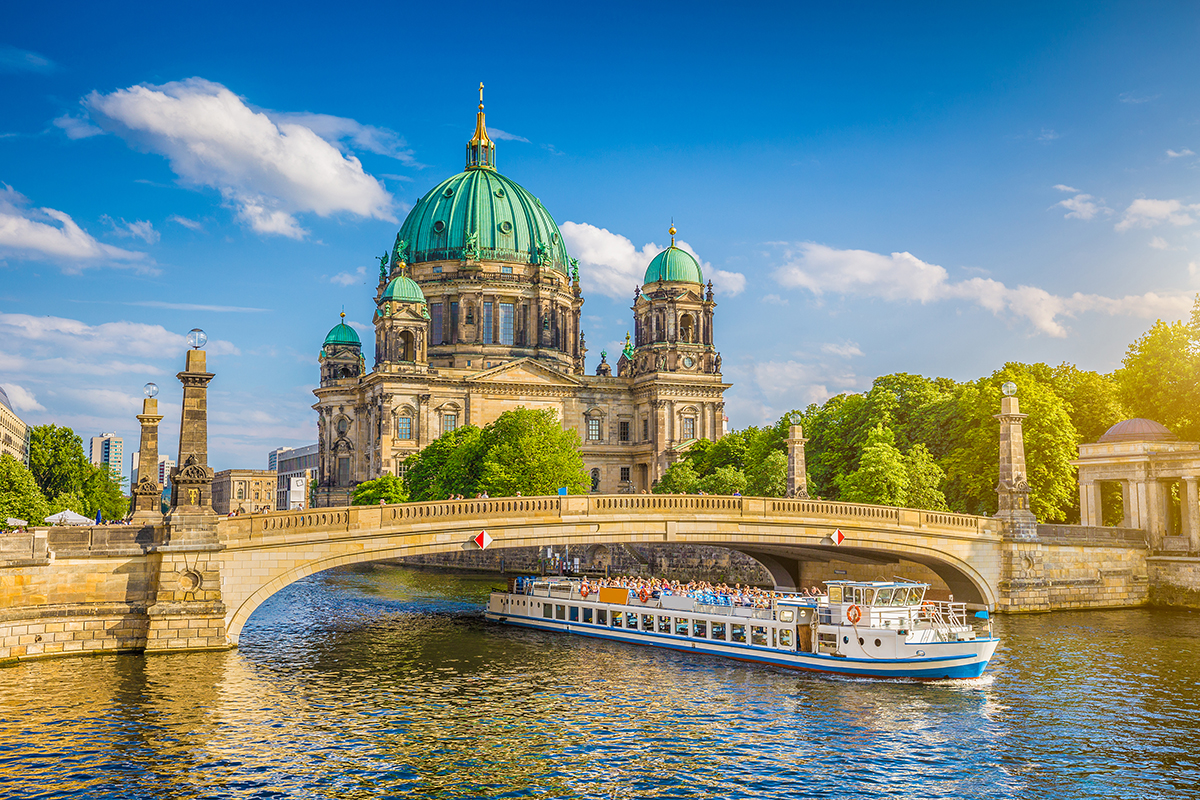
This is one of the best ways to see the city. From the vantage point of the River Spree, you’ll be able to see all of Berlin’s best attractions and learn a little more about the city. The tickets cost around 15 euro – you can find out more information here.
Flea Markets
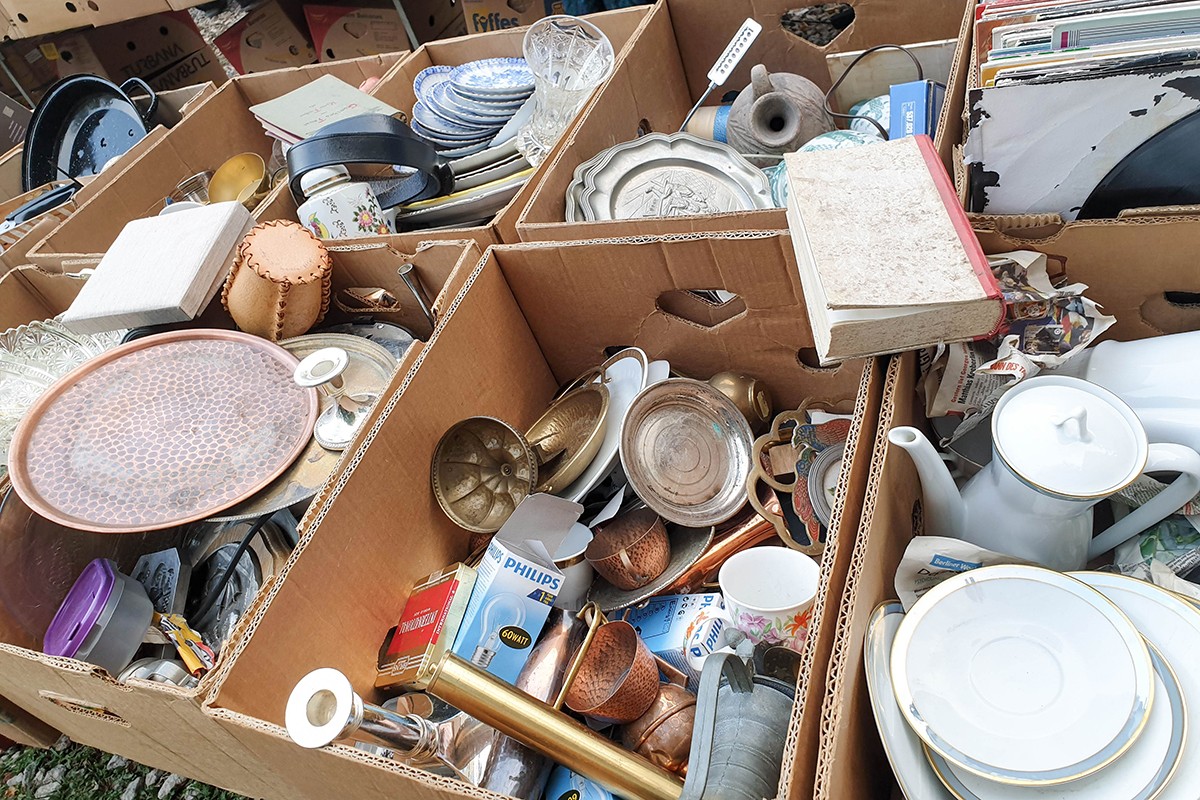
There are lots of flea markets all over Berlin, where you can purchase some antiques and other artefacts. On Sundays, Mauerpark has an excellent flea market that’s worth checking out. If you’re visiting Berlin during the festive period, it’s got some of the best Christmas markets in Europe.
Day Trips from Berlin
Berlin is a great position in northeast Germany, which is ideal for day trips. It’s connected to a range of other cities by road and rail, and has lots of opportunities to escape into nature. I’ve collaborated with some other travel bloggers to show you the best day trips from Berlin – you can check them out here.
Berlin Essentials
Pack for Berlin as you would any other city break, with sturdy shoes, all-weather gear, and a good camera or smartphone to take photos! You don’t need anything highly specific for this city, it’s a relatively easy place to travel in!
Is Berlin Safe?
Berlin is as safe as any other big city. There are some scammers, so watch out for them (generally a group of people who will come up to you and ask you if you speak English). It’s also important to be aware of pickpockets – keep your valuables zipped away.
Other than that, Berlin is a busy city all hours of the day and night, and while at some hours of the night these people can be drunk or on other substances, incidents are generally few and the fact that there are so many people around makes most travellers feel safe.
Where to go from Berlin
There are so many places to visit in Germany (which I don’t feel qualified giving too much advice about – it’s a country that I really need to see more of!). I can attest that the northern city of Hamburg is worth visiting, as is the whole of Bavaria, including its capital, Munich.
Other points of interest in Germany are the old east German city of Dresden, the Black Forest, and historic Cologne. It’s also in an ideal position to visit the Czech Republic or Poland.

